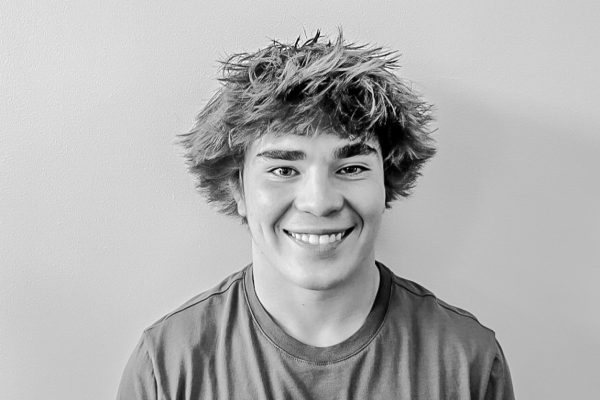GenZ, Social Media, Internet Spaces, and a Pandemic
During the COVID-19 pandemic, young people have turned to social media and internet spaces for social connection and entertainment in a time of isolation
February 6, 2021
Avery Provorse ‘24 feels like it is easy to get sucked into her phone for hours on end. She ends up procrastinating school work, having trouble paying attention in class, and getting tasks done. This has all worsened as a result of the COVID-19 pandemic.
“Personally I think that I’m extroverted,” Provorse said. “So I definitely try to talk to people as much as I can and I think [social media] is a nice way to reach out to people.”
Teenagers have been flocking towards social media platforms during the pandemic as a way to find a social connection that they are missing out on due to isolation during the pandemic. Going to school online or only being in-person for a few days a week can leave students feeling socially lost.
“The key thing that is absolutely true is that social media exists because people are searching for connections,” Kembrew McLeod, a professor of communication studies at the University of Iowa, said. “And searching for escape in the form of making them laugh or smile or be surprised at something crazy.”
Provorse explained that at the beginning of 2020, before the pandemic hit, she would go on her phone and use social media a lot, but wasn’t too worried about it. Then her phone broke and she had to go without it.
“I went without my phone for a long time, actually, before we got a new one, and when I did I decided to download three social media platforms, which are Instagram, Snapchat, and TikTok,” Provorse said.
She described how she enjoyed having Snapchat to talk to her friends and originally was talking to lots of people via Snapchat. Then, after she had gone without her phone, she only stayed to touch with a few friends on the app which helped her reduce her dependence on her phone.
“I think that decreased the amount of social media I was on because I was always replying to people and now it’s a little less pressure,” Provorse said.
Maria Henderson ‘25, an eighth-grader at South East Junior High, has also turned toward social media more since the pandemic started. She has been doing online learning all year and has found that it’s harder to communicate with others when she’s not physically in school.
“I’ve been using social media more than I had before the pandemic started because I get bored a lot easier [and] because I couldn’t go out and see friends, I’d just be like, ‘Oh, I’ll go on Instagram,’” Henderson said.
In November, after realizing that she had been spending a lot of time on her phone, Provorse decided to delete all of her social media apps.
“I deleted all social media because I wanted to see how it would feel and it actually was amazing, I think I’ll do it again at some point,” Provorse said. “I got it back to talk to everyone again, especially now with online schooling. For me, it’s hard without the social connection.”
Provorse enjoys using Instagram to talk to people that she doesn’t know super well. She thinks that the platform is good for reaching out and getting to know other people in the community.
“That’s good for me, especially as a freshman, I want to get to know the upperclassmen and that’s the way to do it, for sure,” Provorse said. “But it’s weird with online schooling because I don’t have the same interactions as I would with in-person [schooling].”
McLeod points out that all of the most popular social media platforms, such as Instagram, Twitter, TikTok, and Snapchat, were already a part of many, if not most, teenagers’ daily routines.
“The world that we’re living in now where we’re relying more on social media to interact, it’s still the world that we lived in just a year ago, before everything changed,” McLeod said. “Because back then, people were using social media extensively. So I think, rather than it being a complete abrupt break or a complete new theme, I think it’s more of an addition from the world that we lived in before.”
TikTok has about 100 million monthly U.S. users, which is up 800% from July 2018. There was a 27% increase in the number of downloads in the first 23 days of March, when the pandemic was first starting.
“TikTok has become very popular in the post-pandemic stage. But it had already been gaining momentum quite a bit over the previous year,” McLeod said. “TikTok lucked out because its platform was perfectly tailored for the kinds of experiences that a lot of people were looking for when they’re isolated at home or in their rooms.”
In January 2018, the app had 54,793,729 global users and as of July 2020, that number grew to 689,174,209 global users. TikTok has benefited greatly from the pandemic because it’s platform allows users to share short videos easily.
“[TikTok] has benefited the most out of all social media companies because its platform makes it easy to share videos that are funny and would connect people to other people,” McLeod said.
Provorse and Henderson described how they want to make connections with other people, and McLeod pointed out that TikTok allows users to make connections with lots of different people, which is one of the things that has led to its success during the pandemic.
“One of the most popular kinds of videos on the platform are funny videos and I think people are searching for ways to make them smile and make connections with other people,” McLeod said.
Other social media platforms have started to adapt their interfaces in response to TikTok’s success. For example, Instagram introduced its new “Reels” feature, a part of the app that allows users to swipe through short videos, on August 5, 2020.
“Instagram and other social media platforms and basically copying [the] features that made TikTok so popular,” McLeod said.
Additionally, TikTok allows for a certain interconnectedness that other social media platforms don’t necessarily offer.
“We’re all stuck in our rooms or living rooms or bedrooms and people are sharing videos and well, their lives. And what I think is interesting is that people’s lives are very similar. People’s rooms look similar, yes, they might have different posters hanging up but when you see a TikTok video, you’re often seeing a reflection of yourself,” McLeod said. “I think that’s probably maybe another reason that’s driving its popularity.”
Provorse engages with social media both for the social aspect and the entertainment.
“TikTok is a very big part of my day. When I get bored that’s what I do – scroll through [TikTok] and procrastinate homework,” Provorse said. “Especially with the fact that I don’t have a lot of people to walk around and talk to all the time. So it’s kind of cool to see what other people are up to in the world.”
Henderson struggled with adjusting to online classes at the beginning of the year but has been able to adapt and doesn’t have too much trouble paying attention.
“I’m fully online and at the beginning, there was some struggle. But then after a couple of weeks, I started to get the hang of it,” Henderson said. “I do pay attention in classes and the fact that they have half days for online is really helpful because I wouldn’t be able to stand sitting in front of a computer for eight hours.”
Henderson thinks that her generation’s reliance on social media will affect them in the future in negative and positive ways.
“There’s probably going to be some cons but also some pros, like with anything,” Henderson said. “[We might be] able to be more technology smart, but communication-wise, we might have a weak spot.”
Provorse has thought a lot about how technology is going to affect the future but is unsure exactly how it will happen.
“I personally have younger siblings and they are on screens quite a bit, not so much social media, but YouTube and playing video games. I remember being that age and not having all that and not being on screens so much, I had a DS and that was about the best I got,” Provorse said. “I think it’s weird. I think it’s gonna change a lot within the next few years.”


































Avery Provorse • Mar 5, 2021 at 2:30 pm
This is amazing Jesse! I’m so glad I got to be involved in this! Social media is definitely changing lives these days.